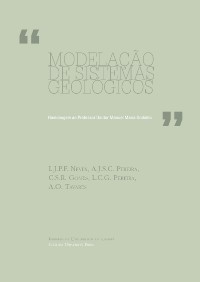Please use this identifier to cite or link to this item:
https://hdl.handle.net/10316.2/36298| Title: | O contributo do Museu e Laboratório Mineralógico e Geológico da Universidade de Coimbra para os estudos de Paleontologia Africana | Authors: | Callapez, Pedro Gomes, Celeste Pinto, Manuel Serrano Lopes, Fernando Pereira, Luís Gama |
Keywords: | University of Coimbra;African Geology;History of researches;Documentary analysis;Universidade de Coimbra;Geologia Africana;Historial de pesquisas;Análise documental | Issue Date: | 2011 | Publisher: | Imprensa da Universidade de Coimbra Laboratório de Radioactividade Natural da Universidade de Coimbra |
Journal: | http://hdl.handle.net/10316.2/36282 | Abstract: | The Mineralogical and Geological Museum and Laboratory of the University of Coimbra
were a main unit of the Faculty of Sciences during the XX century. It originated from the
earlier Section of Mineralogy and Geology of the Natural History Museum (1885) and was
subdivided, after 1992, in both the Earth Sciences Department and the Mineralogical and
Geological Museum. Side by side with many other contemporaneous activities of this
structure, the research, teaching and outreach of Paleontology from the ex-Portuguese
African territories was marked by a rather late, but still significant contribute that gathered
reputation to the University, also with the creation of a scientific journal (Memórias e
Notícias, since 1921).Although the intention to supply the Museum with African samples
and specimens was noticeable at least since the 1840´s, the collections of minerals, rocks
and fossils began only to be assembled more than 50 years later. The geologic studies were
initiated with Prof. Anselmo Ferraz de Carvalho. Some years afterwards they continued
under the direction of Prof. Cotelo Neiva (1950 onwards). Concerning the works of
Paleontology of Angola, Mozambique and/or São Tomé and Príncipe, the emphasis goes to
Gumerzindo Henriques da Silva (from 1953 to 1972), António Ferreira Soares (from 1959
to 1970) and Armando Moura (from 1958 to 1976), among others. With a few exceptions,
the taxonomic groups studied by these workers were Cretaceous and Miocene bivalves,
gastropods, cephalopods and echinoids. Most studies deal with systematic, taxonomic and
biostratigraphyic problems, and their pertinence and quality have been confirmed by a
significant volume of scientific contacts with foreign institutions and specialists of
Paleontology. In the present study we make a brief analysis of these works and related
collections, as well as a review of the literature of the real contribution of Coimbra during
the golden era of African studies that were the 1950’s to 1970’s of last century. O Museu e Laboratório Mineralógico e Geológico da Universidade de Coimbra, herdeiro da Secção de Mineralogia e Geologia do Museu de História Natural (1885) e, mais tarde, repartido pelas estruturas do Departamento de Ciências de Terra e do Museu Mineralógico e Geológico, desempenhou um papel algo tardio, mas mesmo assim brilhante, no estudo, ensino e divulgação da Paleontologia dos antigos territórios coloniais africanos, prestigiando a Universidade e divulgando uma revista científica própria (Memórias e Notícias, desde 1921). Embora existisse a intenção de nutrir o museu com amostras e espécimes africanos, pelo menos desde a década de 40 do século XIX, os acervos de minerais, rochas e fósseis só começaram a ser constituídos mais de 50 anos depois. Os estudos geológicos tiveram início com o Prof. Anselmo Ferraz de Carvalho e, mais tarde, sob a égide do Prof. Cotelo Neiva (1950 em diante). Na Paleontologia de Angola, Moçambique e/ou São Tomé e Príncipe destacaram-se Gumerzindo Henriques da Silva (entre 1953 e 1972), António Ferreira Soares (entre 1959 e 1970) e Armando Moura (entre 1958 e 1976), entre outros. Na sua maioria, os grupos taxonómicos abordados por estes autores foram os moluscos bivalves, gastrópodes e cefalópodes e os equinídeos do Cretácico e Miocénico, apresentando os estudos preocupações de ordem sistemática e estratigráfica. A grande qualidade destes estudos é corroborada pelos estágios internacionais que efectuaram e pelo volume significativo de correspondência mantido com especialistas das principais instituições científicas europeias da época, ligadas à Paleontologia. No presente estudo é feita uma análise destes contributos e dos acervos deles resultantes, a par de uma recensão da bibliografia que traduz o contributo efectivo de Coimbra na época áurea para os estudos africanos, que foram as décadas de 50 a 70 do século passado. |
URI: | https://hdl.handle.net/10316.2/36298 | ISBN: | 978-989-97106-0-3 978-989-26-1009-2 (PDF) |
DOI: | 10.14195/978-989-26-1009-2_11 | Rights: | open access |
| Appears in Collections: | Modelação de sistemas geológicos: livro de homenagem ao Professor Manuel Maria Godinho |
Files in This Item:
| File | Description | Size | Format | |
|---|---|---|---|---|
| o_contributo_do_museu_e_laboratorio.pdf | 3.55 MB | Adobe PDF |  |
Items in DSpace are protected by copyright, with all rights reserved, unless otherwise indicated.
